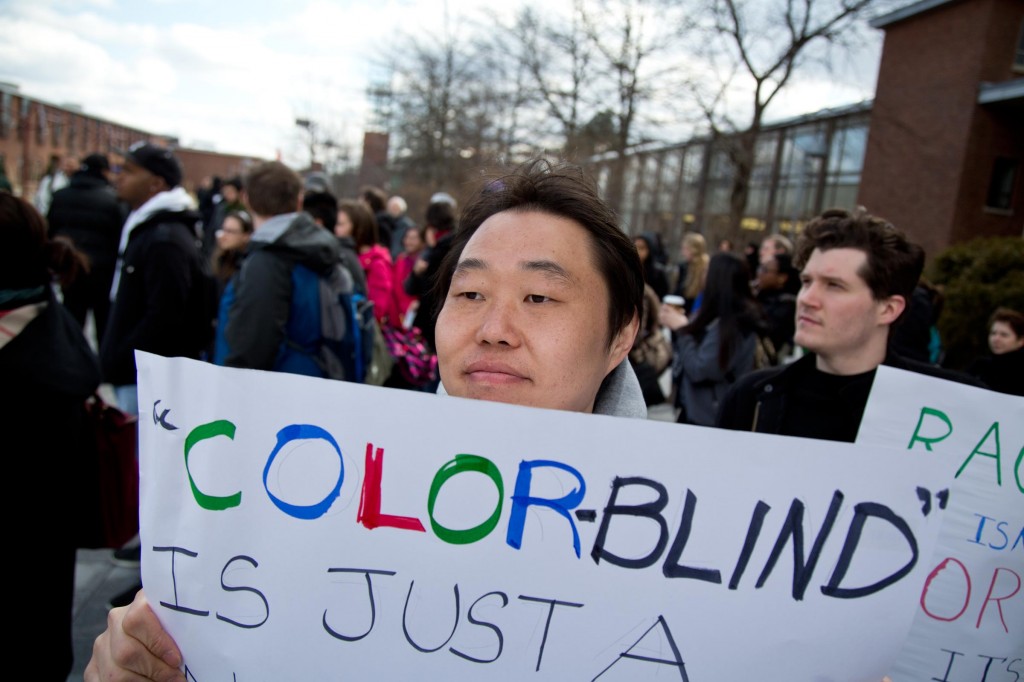
Students united for a rally followed by a teach-in on Wednesday to bring awareness and visibility to issues of personal and institutional racism faced by students every day.
The rally, which started by the Pegasus statue, looped around the Brain and to the Couper Administration Building. The crowd stopped along the way for speeches by undergraduates, graduate students and alumni sharing their personal experiences with racism.
John Jones, a graduate student, said the corrections system is stacked against African American students. According to Jones, African American students account for 16 percent of all youth, 20 percent of all juvenile arrests, 35 percent of all youth tried in adult criminal courts and 58 percent of all youth admitted to state prisons or penitentiaries.
“Those are the children of the future and they are going to jail,” Jones said. “They are not going to school, and they are not going to college.”
Michael West, a sociology and Africana studies professor, said that Binghamton University lacks diversity in comparison to the state of New York. When compared to the demographics of New York as a whole, blacks, Latinos and Native Americans are each underrepresented at BU.
“This is not a diverse place,” he said. “It is not. This institution called Binghamton University is not really a diverse place. It is supposed to be part of the State University of New York, but Binghamton University cannot be said to be diverse until it looks like the state of New York.”
The event concluded with a teach-in, featuring three faculty speakers and an open-floor discussion for students and staff to voice concerns and opinions about issues brought up at the rally and at last week’s forum on racism.
Dominique Hutchinson, a senior majoring in human development, said she was concerned by the lack of interaction between students of different races.
“I can go my whole four years here at Binghamton without speaking to a white person, or speaking to an international student,” Hutchinson said. “This is just like high school, everybody goes into their own cliques.”
Nicole Sirju-Johnson, director of the multicultural resource center, offered to hold a series of workshops to deal with cultural sensitivity and interpersonal racism on campus.
Sirju-Johnson’s offer was met with mixed responses as disagreement arose about how best to solve problems of racism, either focusing on acts of individual racism or institutional racism as a whole.
“I’m not crazy about having administrators holding the conversation,” one student said. “We’re very capable of doing that on our own.”
Ashley Dawson, a senior double-majoring in English and Africana studies, said a more balanced approach is necessary to tackle both forms of oppression if any progress is going to be made.
“I think it’s important to note that personal experiences with racism and institutional racism are very much linked, one is a product of the other,” Dawson said. “I just wanted to remind everybody that these aren’t independent of each other, and I don’t think we should address them as if they are.”
Toivo Asheeke, a graduate student, closed the rally with a word of advice to students.
“Continue to be indignant to oppression and maladjusted to injustice,” he said.
The rally and teach-in were organized by the Social Structural Inequality Combating Coordinating Committee.


